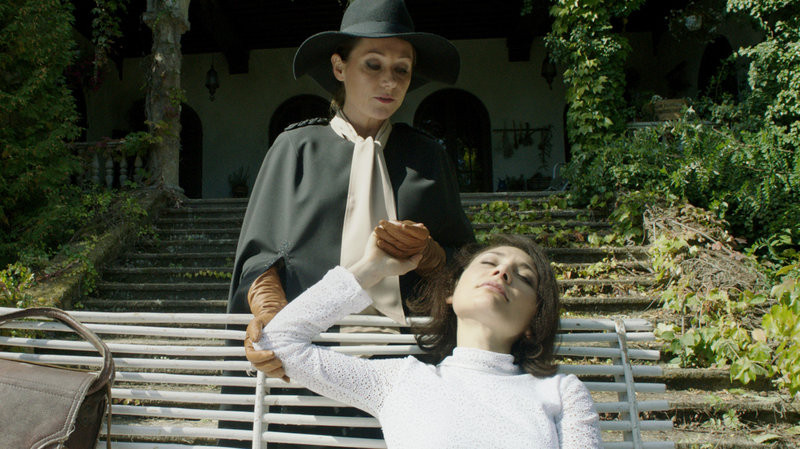The Duke of Burgundy takes place in a town without any male presence. Where the men have gone, writer-director Peter Strickland won’t say. The absence is never mentioned, it only helps accentuate the otherworldliness of wherever the film is set: some facsimile of Earth that first seems right out of a fairy tale as we watch a caped Evelyn (Chiara D’Anna) bike into a quaint small town to the cheerful sound of the soundtrack from alt-pop duo Cat’s Eyes. When Evelyn arrives at an elegant, ivy-drenched home, Cynthia (Sidse Babett Knudsen) welcomes her with a cold “you’re late” and orders her around like a prickly mistress would Cinderella.
None of this, though, is at it appears. Instead, Cynthia’s orders to have Evelyn clean the house and wash her underwear are part of their tightly-scripted roleplaying, a sexual fantasy that Evelyn not only fully understands, but also, as we glean later from the detailed instruction cards that she leaves for Cynthia, fully controls. The twist is foreshadowed by Strickland’s allusion to 1970s European softcore films in the opening credits, but it exemplifies how the film marvelously, and repeatedly, opens up in surprising new directions.
Case in point: Evelyn and Cynthia’s relationship is also a veneer, a superficially provocative way to guide us into the film’s central love story, one about compromise, passion, and jealousy. The Duke of Burgundy moves gradually but naturally toward this emotional territory. The housemaid routine is one that Cynthia and Evelyn repeat frequently, but the second time we see it, there’s a hint of boredom in Cynthia’s eyes, and as Evelyn is cleaning Cynthia’s boots, she has to knock on the door to get Cynthia to move along to the next part of the script.
The two, it becomes clear, are pushing further into a rut, one that Evelyn hopes to avoid by exploring new types of kink (she finds a large trunk that she gets Cynthia to lock her in at night). Cynthia, though, yearns for a different connection. When, one morning, Evelyn says to Cynthia, “Tell me something,” Cynthia replies: “I can start with how much I love you, and how happy I am that you’re here with me.” But Evelyn was after something else. “Talk about the other things,” she requests coyly, and Cynthia complies: “I’m not happy with you at all,” she starts, as her hands and Evelyn’s slide under the covers.
The superficial control that Cynthia exerts over Evelyn sexually contrasts with her lack of emotional power. From that conflict, Strickland expertly weaves a psychological drama—a push and pull for domination—that, in D’Anna and Knudsen’s hands, never descends to mere gameplay; there are always real emotions at stake, in part because both actresses are so good at channeling their characters’ insecurities. (Evelyn, for her part, regularly makes exaggerated efforts to show off her intelligence while accompanying Cynthia to lectures at an entomology institute.)

9(MDAxOTAwOTE4MDEyMTkxMDAzNjczZDljZA004))

